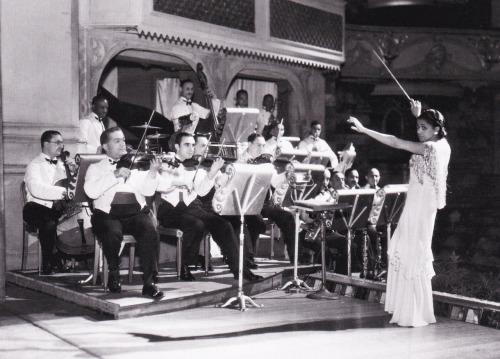For several days, my father and other Montford Marines were greeted warmly by members of Congress; speaker of the House John Boehner was even moved to tears in his speech. Although suited up, the White octogenarian clearly was not a legislator.
"He is a Montford Point Marine. He was one of the officers," the person sitting next to me announced. It then dawned on me-- White Officers were used to train Montford Point Marine recruits. When the boot camp was established in 1942, obviously there were no Black Officers. They had to be found from the Army or Navy or quickly trained by current officers. So Montford Point Marines also includes White Americans, a fact that I have omitted in my posts. It is important to include all Montford Point Marines and not exclude any from the history.
 |
| Source: uncw.edu An Officer inspects a rifle. |
According to "The Right to Fight: African Americans in the Marines," Colonel Samuel Woods was selected to command Camp Montford Point. Colonel Woods had to "start from scratch with no cadre of experienced African Americans except for a handful with prior service in the Army or Navy." Below is a list of ten facts about Camp Montford Point from "The Right to Fight."
Ten Facts About Camp Montford Point
- Colonel Samuel Woods was in charge of Montford Point, New River, North Carolina
- Woods also commanded, the 51st Defense Battalion Composite, the first World War II African American Combat Unit
- Lieutenant Colonel Theodore A Holdahn was in charge of recruit training.
- Montford Point included two dozen White Officers.
- 90 White Enlisted Marines were known as the Special Enlisted Staff. They included clerks, typists and drill instructors.
- Special Enlisted Staff were vetted to exclude anyone opposed to the presence of Blacks in the ranks.
- The Marines were to replace the Special Enlisted Staff with Black non-commissioned officers as soon as possible. This was done by testing and personal observation.
- First Promotions to Private First Class took place in November 1942 for Blacks.
- Secretary of the Navy Knox authorized a Marine Messman Branch and the first of 63 combat support companies (Depot/Ammunition).
- 52 Defense Battalion established.
 |
| Source: montfordpointmarineassociation.com Drill Instructor Elmer Bowen He received positive reviews from recruits. |
Over 20,000 African American men trained to become Marines at Montford Point. The segregated training facility was located in New River, North Carolina. A road separated their boot camp from Camp Lejeune and African American Marines were not permitted to venture into Camp Lejeune unless accompanied by a White Officer. Black Montford Point Marines "could not eat unless their White counterparts were finished with their meal."* Apparently, Southern conventions and military protocols still maintained the separation of races.
Also, it is vital to note that:
General Holcomb in March 1943 issued Letter of Information 421, which declared it "essential that in no case shall there be colored noncommissioned officers senior to white men in the same unit, and desirable that few, if any, be of the same rank." LOI 421 was a classified document and did not become public during the war. (The Right To Fight)
Moreover, White Officers, in charge of training Black recruits were selected based on previous military experience in working with Asians or Latinos in previous military campaigns. "The Right to Fight" reports that White officers could not harbor any resentment towards Blacks serving in the Corps. This would have been detrimental for cohesiveness as a unit and undermine the program. Under direction from Colonel Samuel Woods, White Officers and Special Enlisted Staff insured that Montford Point Marines received optimal instruction. The White Officers were then replaced by Black non-commissioned officers. Therefore, when speaking of the Montford Point Marines, White Officers and Special Enlisted Staff must be included. Their stories need to be told as well.
Were you aware of the story of the White Officers and Special Enlisted Staff? What about classified document LOI 421?
Don't forget to share and become a follower!
 |
| Source: uncw.edu An officer assists a member of the 51st |
Sources:
*al.com
The Right to Fight
uncw.edu













.jpg)




